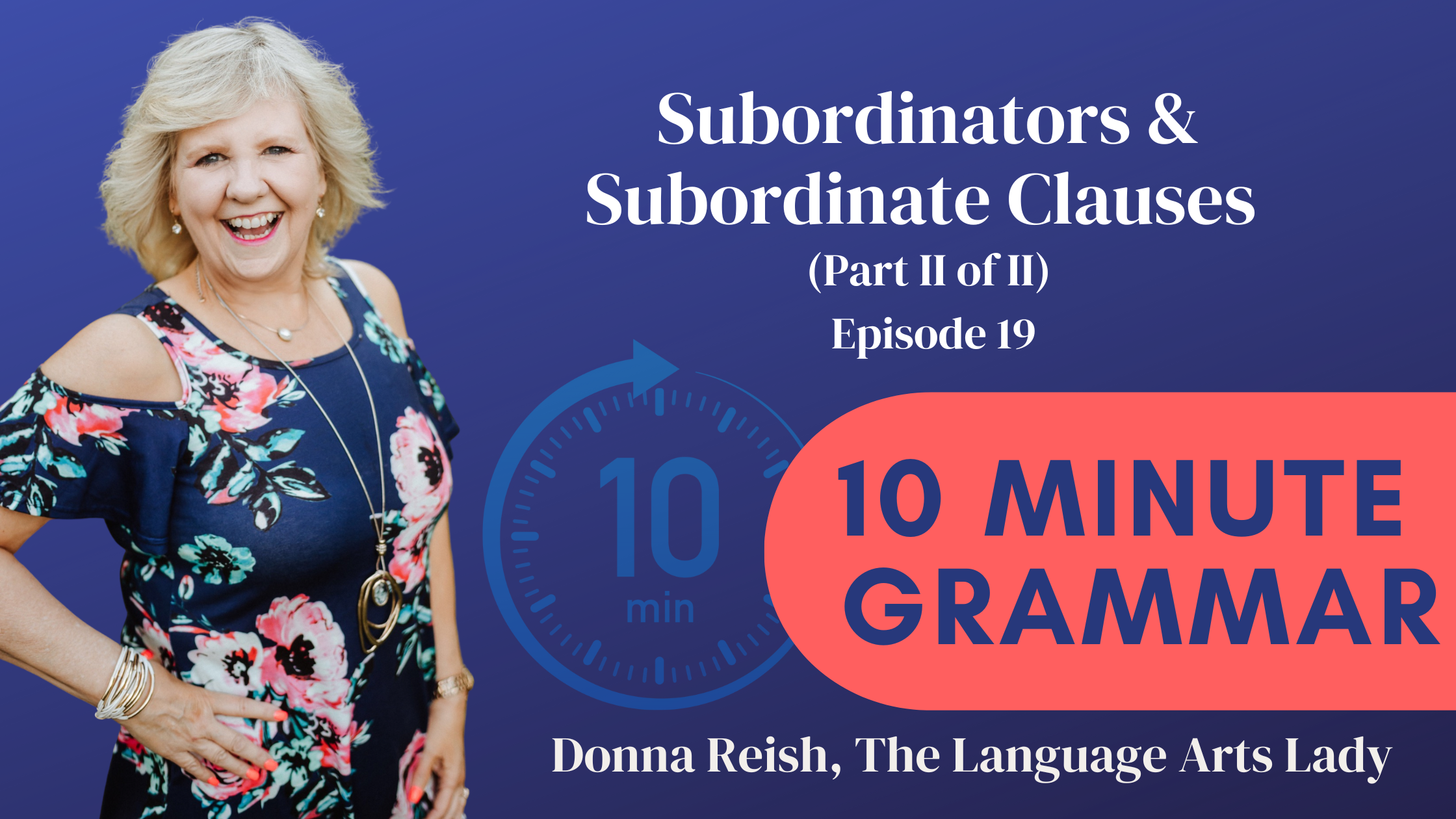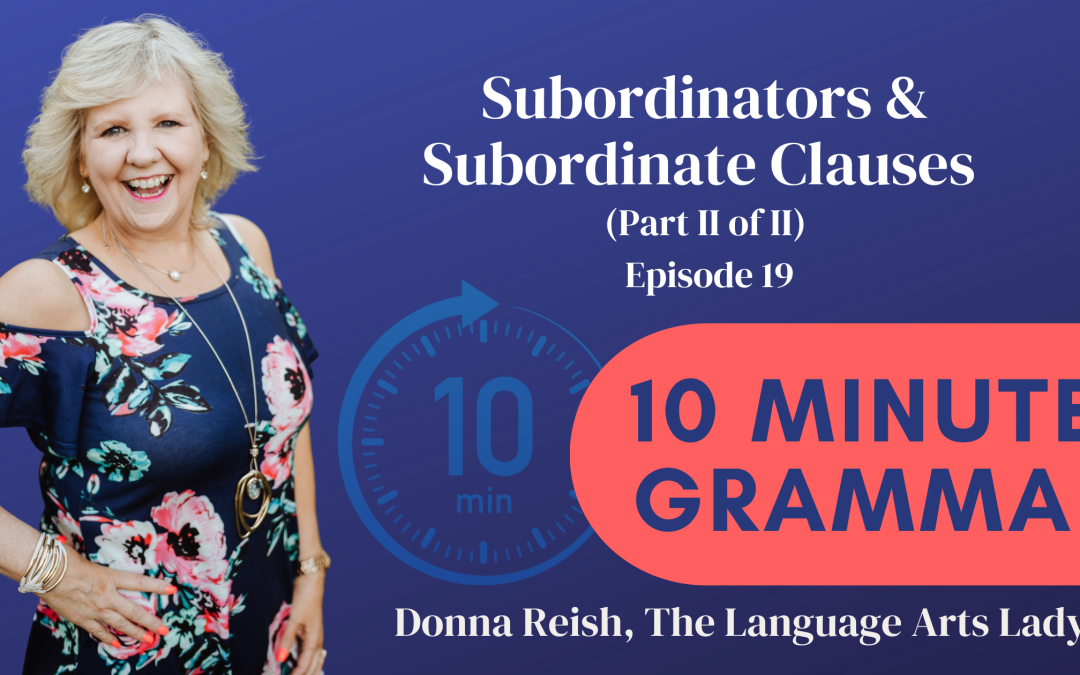In this episode, I review my first two tricks for teaching students lists of subordinators:
(1) First seven subordinators learned in rhyme:
Since, when, because, though
As, if, that, although!
(2) Subordinate-Check Sentence—
75% of the dozens of subordinators fit into this check sentence (and, it also shows that subordinators are subordinate to the rest of the sentence—like submarines go down!):
_______ the submarine went down, we could still/not see it.
After that review, I teach about the power of using terminology and tricks that have something to do with what that part of speech is or does.
In the case of subordinate clauses, I like to use the term subordinate clauses over dependent clauses since the subordinator is the first word in a subordinate clause….
And subordinate means less. A subordinate clause is less than a real sentence and cannot be used unless it has a complete sentence added to it:
Sub clause, complete sentence.
Lastly, I explain four important reasons to have students memorize/recognize Subordinators (and eventually recognize subordinate clauses quickly and easily):
- Subordinate clauses are bot sentences —recognizing sentences and non-sentences is one of the crucial early writing skills.
- Punctuating subordinate clause openers and putting complete sentences with openers properly is essential.
- Subordinate clauses have subjects and verbs and need to have these match in tense and number—just like a sentence does.
- It will be important later to learn the details of advanced punctuation with subordinate clauses in various positions in a sentence.
Learn more about memorizing parts of speech through a weekly Think Fast Grammar Quiz (
Beginner and
Advanced).



